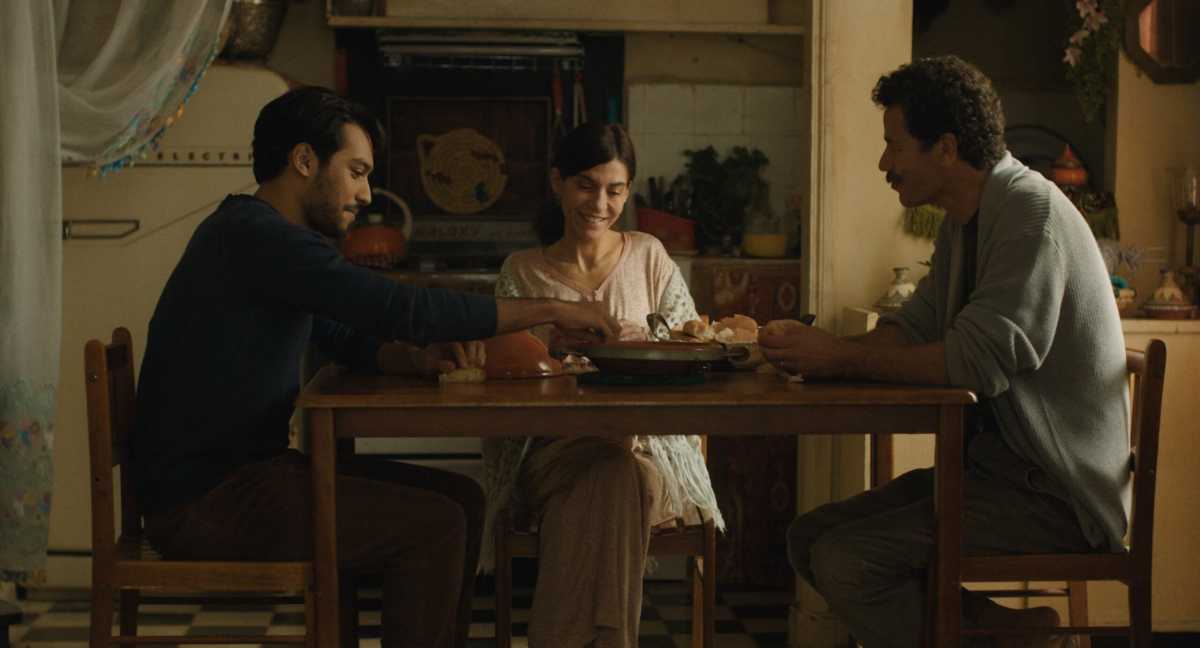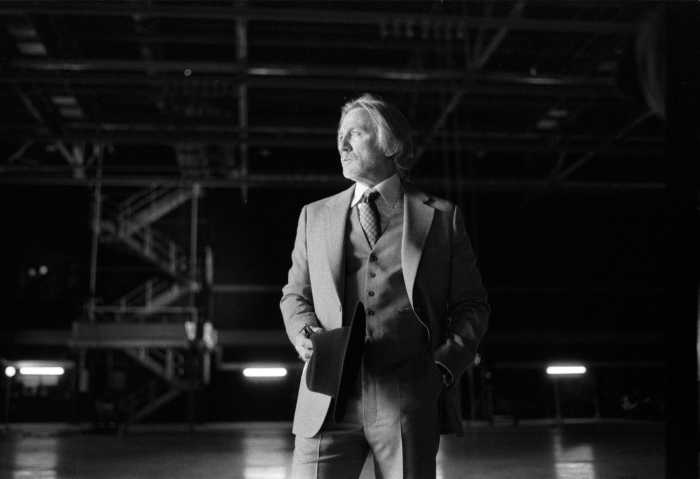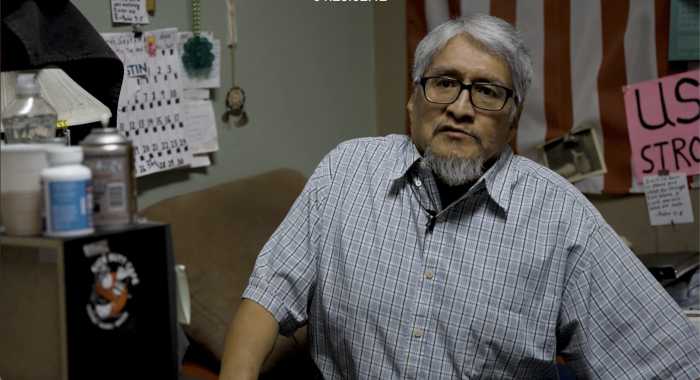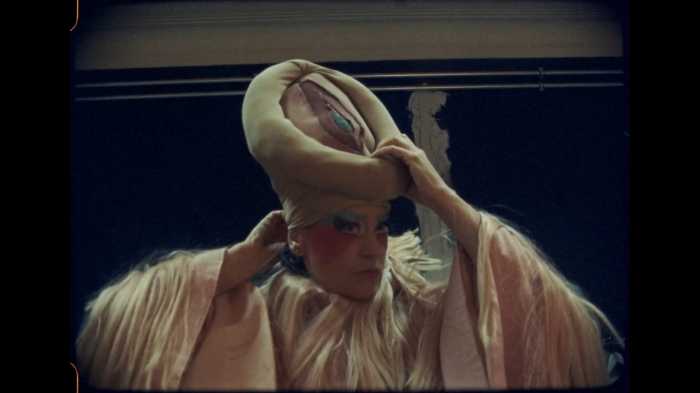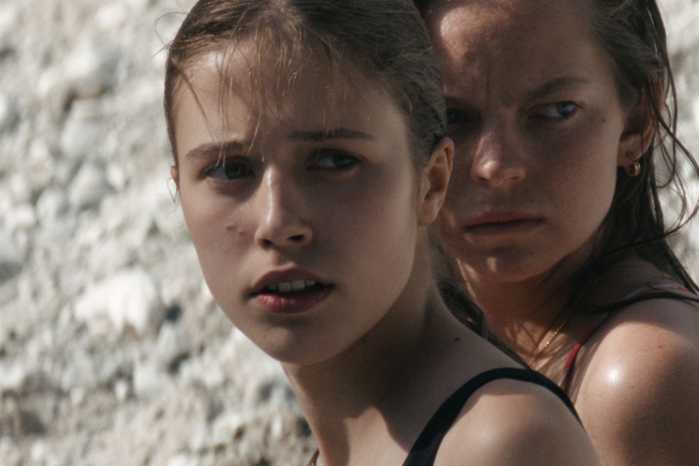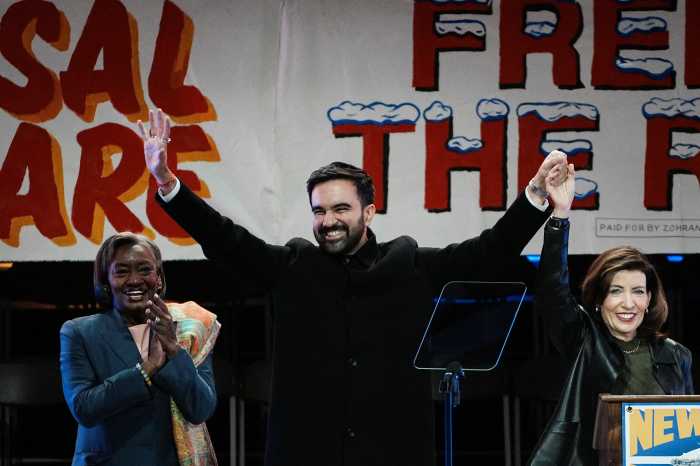“The Blue Caftan” is an exquisite slow-burn romantic drama from Morocco, a country where homosexuality is illegal. Halim (Saleh Bakri) is a maalem, a tailor who works painstakingly by hand. He sews gorgeous, ornate caftans that are sold in the shop he and his wife, Mina (Lubna Azabal), own. Behind in their work, and facing other issues, Halim starts training Youssef (Ayoub Missioui), a handsome new apprentice. The looks Halim and Youssef exchange are full of smoldering desire, and when they touch — as when Halim trains Youssef to cut a collar or guide a needle — it is downright erotic.
“The Blue Caftan” subtly depicts the love that develops between Halim and Youssef, as well as Halim’s deep affection for Mina. Bakri makes Halim’s internalized guilt and shame palpable and Azabal and Missioui respectively deliver steely and sensitive performances.
Touzani spoke with Gay City News about her film, which was shortlisted for the Best International Film Oscar.
There is a sensuality in the long, lingering glances, the touch of two male hands, the texture and colors of the fabrics or a tangerine. Can you talk about how you created the film’s intimacy?
For me it was all about detail. In life there are so many details we don’t see, and they are essential, and what makes up the most beautiful things in our life. I wanted to get as close as possible to these characters and delve into their intimacy and penetrate their soul through the details. That’s the magic of cinema. The details reveal things about characters and help us understand them further. Through this caftan, I wanted to understand who Halim was. When he sews this caftan, he is also stitching his wounds. It is very much about who he is and how he works. He pays attention to every stitch and is a perfectionist. In all my films I like to get as close as possible to their truths and their relationships to be with them as they evolve. I wanted you to feel them and the way they are feeling their world as well. When Halim touches his fabric, I wanted viewers to have that same sensation. I worked on the colors and textures you don’t see but feel because they reveal the intimacy of the characters.
Can you discuss the power dynamics between Mina, Halim, and Youssef?
I wanted to talk about different ways of loving. The relationships, on the surface, appear simple, but there are a lot of layers. Halim loves Mina profoundly, and she loves him profoundly. They’ve been together for 25 years and their relationship is constantly evolving. I wanted to explore how the love between Mina, Halim, and Youssef evolves together and separately, as a couple, and in a triangle, redefining their positions.
What about themes of masculinity and homosexuality in the film? Halim is closeted and yet seeks out men in the local hammam. How did you want to present male sexuality given that homosexuality is illegal in Morocco?
Homosexuality in Morocco is extremely complicated, because it is illegal, and you can go to prison for having relations with someone of the same sex. It is one of the ultimate taboos. It was essential for me to talk about this to bring about change; we have to talk about it. The LGBT community [in Morocco] has to have a voice and a face. It is as if not talking about them keeps them out of existence. That really hurts me — to see men and women have to hide what they feel, not be who they are, or love who they want to love. Halim is a man struggling because he cannot be who he is on an everyday basis. He has to put on a façade. I have seen a lot of men in this situation where they had to hide and were obliged to pretend to be married, have sex, and have children, because they had no other choice; they had to prove they were not gay. He does not love himself. His passion is his craft, but it is also a way for him to heal his wounds and cut himself off from the world to be in his own safe place, making beautiful caftans.
Youssef, in contrast, is almost too noble in the film. He is humble and grateful, honest, and caring. How did you conceive of his character?
With Youssef, I believed in goodness, and that there are people like him. I spent a lot of time with maalems and heard stories such as one from a man who said he started [working] as a young boy who was kicked out of his home at 8 years old and had to cope on his own. [As Youssef says in the film.] It made him into someone who knew how to value things in life at a young age. He values not money, but the human relationships. He matured quickly, but in a good sense. I wanted Youssef to be something positive in the life of Halim and Mina, not draw them apart.
Mina, of course, is the most formidable character. What decisions did you make regarding her character who is the centerpiece of the story?
For me, Mina is quite exceptional. She is very strong-willed, and she does all the things that Halim doesn’t have the ability to do. He has a hard time with customers. She is there to protect him, and she does this out of love. She is almost like a mother to him. I wanted to explore different kinds of love — maternal love, and family love, which comes with Youssef. The boundaries are not clear and that’s interesting, because I feel that is what love is about.
Mina is overprotective of Halim because she knows society around him is extremely severe.
The title object is a symbol — of beauty, of a dying craft. It has both sentimental value and is desired by those who can’t have it. How did you conceive of this object and all of the meaning behind it?
The caftan was the thread that stitches them all together. We start with a piece of fabric, and we discover the man touching it. The caftan is going to accompany relationships and tell Halim to know him and his passion and know his intimate emotions. It is a symbol of all this. It crosses the whole film bringing them together. When Yousef brings the caftan to Halim and Mina’s home, it’s the thing that bonds and weaves them together. As the caftan becomes more complex visually, the bonds are becoming more complex. It’s also the complexity of emotion. This caftan was inspired by a caftan that belonged to my mother. I grew up seeing her wear this caftan. When she gave it to me, I felt the beauty of transmission. It was very powerful.
“The Blue Caftan” | Directed by Maryam Touzani | Opening February 10 at Film Forum | Distributed by Strand Releasing

